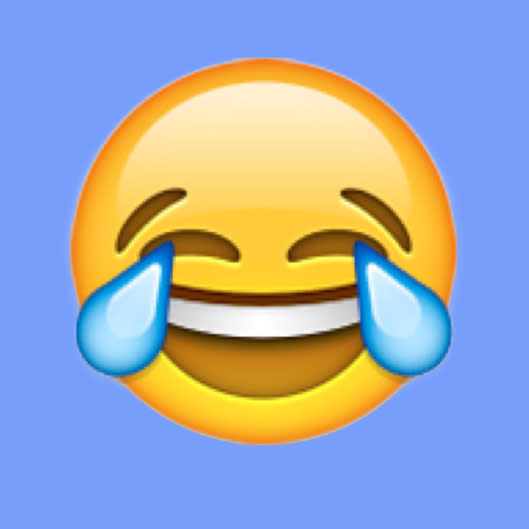Here’s the Science of the Happy Cry

On Monday (Nov. 16), Oxford Dictionaries released its word — or shall we say, feeling — of the year: that oxymoronic emoji your buds are always tossing around in text conversations, which shows a smiley face lined with streaming tears on either side, meant to convey something along the lines of “tears of joy” or “laughing to the point of crying.”
On the one hand, yes, it is kind of ridiculous to select an emoji as the “word” of the year. But on the other hand, there really isn’t an existing English word that expresses the incongruous emotional outburst that little emoji gets across. Apart from happy tears, consider nervous laughter, or seeing something so achingly adorable you have to … eat it?
Related: Why Do Women Cry More Than Men?
As it turns out, there are a couple of evolutionary reasons why we have these opposing emotions, which psychologists have termed “dimorphous expressions.” In a paper published earlier last year in the journal Psychological Science, Oriana Aragon at Yale University’s department of psychology has explored the paradox of “cute aggression,” where a person is so overwhelmed by the dawww-worthiness of a subject that they express a desire to eat that squishy little thing right up.
The explanation for this, Aragon argues, is similar to the reason why people tear up from too much happiness, like soldiers’ homecomings or brides at the altar. For one, it’s a signal to those around you that you’re feeling an intense emotion. “Expressions are a signal to others that you’re overwhelmed, that you need comfort,” she told Science of Us. “Even though something great has just happened, you are telling people that you need someone to comfort you. Crying when you’re happy arouses consoling behaviors.”
The second reason why people might have these dimorphous expressions is to get their emotions in check. Aragon’s research shows that when we’re so overwhelmed with happiness that we end up sniffling, we’re actually swinging our emotions back like a pendulum of sorts, trying to dial our elatedness back down. That’s why when you see people crying tears of happiness, there’s usually a swift tempering toward normalcy (after that consoling session).
What’s intriguing in Aragon’s research is that the people who tend to cry when they’re happy are also the ones who aggressively pinch a baby’s cheeks or giggle inappropriately during a tense exchange. As for the rest of us who aren’t weepy at weddings or births? “People who don’t do it just don’t get that emotional – they don’t reach those emotions, they just don’t express it and it doesn’t really matter so long as they can process their emotions,” Aragon said. For those who don’t actually cry when happy, an emoji will have to do.
By Tanya Basu
Why Women Have More Childhood Memories Than Men
3 Reasons Why You Are Always Mishearing Song Lyrics
When Jealousy and Empathy Collide in the Brain
